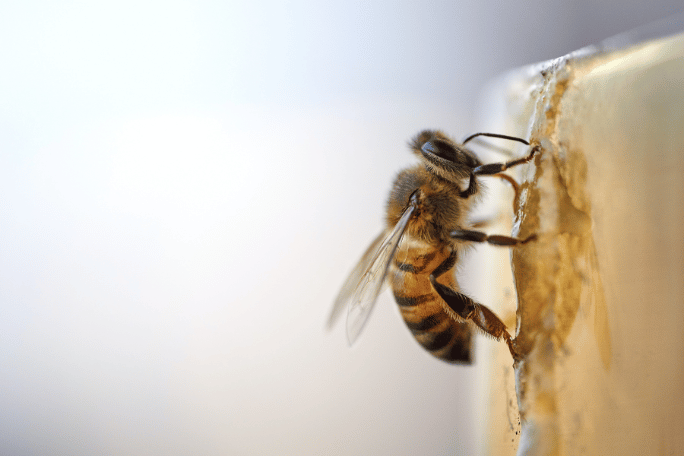Lesson summary
This lesson is designed for a flipped classroom, where students learn new content by watching a video in their own time. This strategy provides the opportunity for students to build their knowledge, attitudes and values by themselves, thereby freeing up class time for hands-on work.
Learning intentions:
Students will...
- understand the role that bees and other pollinating animals play in helping plants grow and reproduce
- recognise that bees and other pollinating animals have a critical role to play in providing humans with food
- build their thinking and questioning skills.
Lesson guides and printables
Curriculum links
Select your curriculum from the options below.
Lesson details
Curriculum mapping
Australian Curriculum content descriptions:
Year 7 Science:
- Interactions between organisms can be described in terms of food chains and food webs; human activity can affect these interactions (ACSSU112)
Year 7 Design and Technologies:
- Analyse how food and fibre are produced when designing managed environments and how these can become more sustainable (ACTDEK032)
Year 8 Design and Technologies:
- Analyse how food and fibre are produced when designing managed environments and how these can become more sustainable (ACTDEK032)
Year 9 Science:
- Ecosystems consist of communities of interdependent organisms and abiotic components of the environment; matter and energy flow through these systems (ACSSU176)
Year 9 Design and Technologies:
- Investigate and make judgments on the ethical and sustainable production and marketing of food and fibre (ACTDEK044)
Year 10 Geography:
- The human-induced environmental changes that challenge sustainability (ACHGK070)
Year 10 Design and Technologies:
- Investigate and make judgments on the ethical and sustainable production and marketing of food and fibre (ACTDEK044)
General capabilities: Critical and creative thinking.
Syllabus Outcomes: GE5-2, GE5-3, SC4-15LW, SC5-14LW, SC4-13ES.
Time needed: 20 minutes.
Level of teacher scaffolding: Low – allow students to explore the topic independently.
Resources required
- Internet
- Laptops and earphones
- Student Worksheet
Additional info
This is an original Cool.org lesson. Facts and figures in these lessons may have changed since this lesson was published. We always endeavour to update our resources in a timely manner, but if you see an error or issue in our resources please get in touch with us.


Welcome back!
Don't have an account yet?
Log in with:
Create your free Cool.org account.
Many of our resources are free, with an option to upgrade to Cool+ for premium content.
Already have an account?
Sign up with:
By signing up you accept Cool.org's Terms and Conditions(Opens in new tab) and Privacy Policy(Opens in new tab).